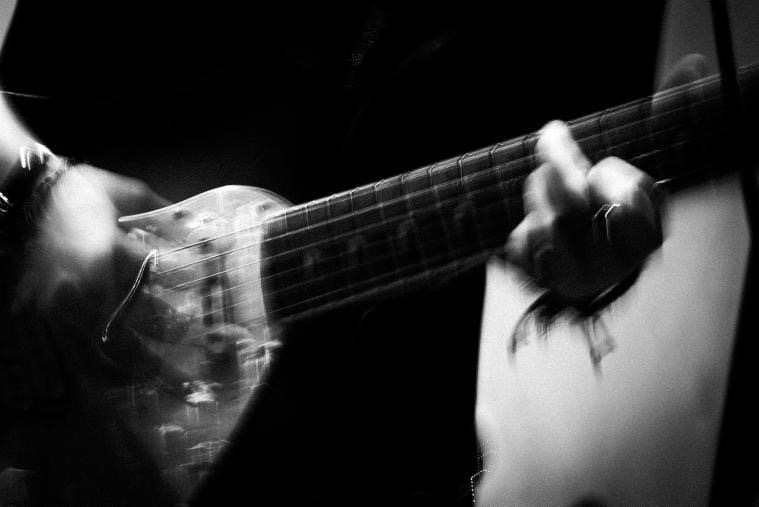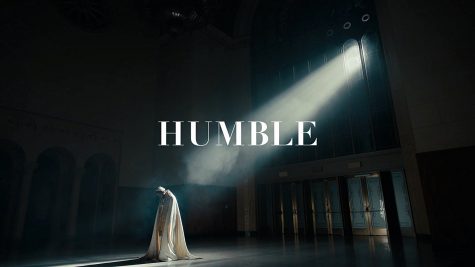WVAU’s #4 Album of 2015: "The Most Lamentable Tragedy" by Titus Andronicus
December 28, 2015

Courtesy of Merge Records
It’s not every day that a band announces that their next album is going to be a rock opera. Sure, they were en vogue in the 70’s and 80’s, ushered in by the Who’s Tommy and Quadrophenia, but the rock opera, arguably with the depreciation of the album as an art form, has not been as popular as it once was. The first one that was released in the past few decades is Green Day’s American Idiot. So imagine our surprise when indie punk rockers Titus Andronicus, led by the ever-vocal Patrick Stickles, announced their fourth studio album would be a 93-minute rock opera. Fans, having been mostly let down from their 2012 release Local Business, were excited to see if the band was going to return to the glory they created with their 2010 masterpiece The Monitor. And if its placement on this countdown is any indication, this rock opera, The Most Lamentable Tragedy, definitely lives up to the hype Stickles drummed up before its release.
A rock opera is so difficult to pull off because the composer not only has to write compelling music and lyrics, they have to do it all while effectively creating characters that the audience will empathize with. Described by Stickles as “a complicated metaphor about manic depression, melding elements of philosophy, psychology, and science fiction through the plight of one troubled protagonist’s inner demons,” The Most Lamentable Tragedy is a 93-minute romp through nearly the entire musical spectrum. Tracks like “No Future Part IV: No Future Triumphant,” and “Lonely Boy” from the first act, are classic +@ at their best. Lyrics like “Cowering in the glowering room / Ex-human left entombed, never to be exhumed,” “Why in the world would I pay T-Mobile / When every day’s the same, feeling anti-social?” and the track-ending litany (right up the band’s wheelhouse) of “I hate to be awake” provide a great characterization for the protagonist of “Our Hero,” a character Stickles is very adamant about distancing himself from. And, in the second act, we are introduced to the “Lookalike,” the protagonist’s doppelgünger and antagonist of the show via the tracks “Fired Up” and “Dimed Out.” The band actually created a short film detailing the events of Act II, entitled The Magic Morning.
The next act involves Our Hero heeding the Lookalike’s advice and living a more fulfilling, if maybe more destructive, life. In the nearly 10-minute “(S)HE SAID / (S)HE SAID,” he sees and falls for a girl (with the beautiful Irish name SiobhÌÁn) more than he ever has before, to the point where he needs to share his “Fatal Flaw” with her, in a track that evokes 90’s era punk. But here is where the plot begins to get very complex. The entirety of act IV takes place in a past-life-regression/dream sequence. It is with this that many critics are disillusioned with the record, citing it as pretentious, but I believe it’s absolutely brilliant. And it contains one of my favorite sequences on the record, where the Celtic-influenced “Come On, SiobhÌÁn” segues into the hardcore punk cover of The Pogues’ “A Pair of Brown Eyes” we didn’t know that we needed.
The conclusion of the album is, as is the case with most pieces of metaphorical storytelling, left rather vague. It is revealed that the Lookalike was the “Beast” that was inside Our Hero from the very beginning in the ballad “No Future Part V: In Endless Dreaming” and the album closer, “Stable Boy,” recorded on cassette tape a la Daniel Johnston, brings a sense of closure, however uneasy, to the story of Our Hero and his Lookalike.
So, on The Most Lamentable Tragedy, Stickles and the rest of Titus Andronicus managed to do the seemingly impossible: create a musically diverse rock opera with proper, interesting characters. Even though Stickles portrays Our Hero and the Lookalike, after repeated listening, one is able to discern which character is singing which lines based purely on the development Stickles has given them in his songwriting.
While all of this does a great album make, there is another aspect of it, something that is often overlooked by many in this era of digital downloads and streaming, that further elevates the record: the packaging. I, like any good pretentious ass, owns the 3-LP set. Housed inside a quad-gatefold cover are three pieces of pristine black vinyl, and inside each gatefold are the lyrics written in Patrick’s signature scrawl along with fantastic art that matches the themes of the opera. The entire color scheme is defined by the brown, tan, green, and yellow cover and is consistent throughout all of the packaging. But one of the most unique aspects of the packaging, and one I haven’t seen very much written about, is the actual construction of the way in which the records themselves are cut. The card with the download code actually has a diagram explaining this somewhat complex process, as you can see in the picture I posted below, but two sentences written on the card simplify the reasoning, and it’s brilliant: “The action on disc two takes place one hundred years in the past. Things moved a lot slower back then.Û

This is such a little touch that shows that a lot of thought and care went into the vinyl pressing of this album, which is something that often is an afterthought. As someone who is a staunch defender of physical media, this means a lot to me and is why The Most Lamentable Tragedy, as an entire package, is one of the best albums released this year.














